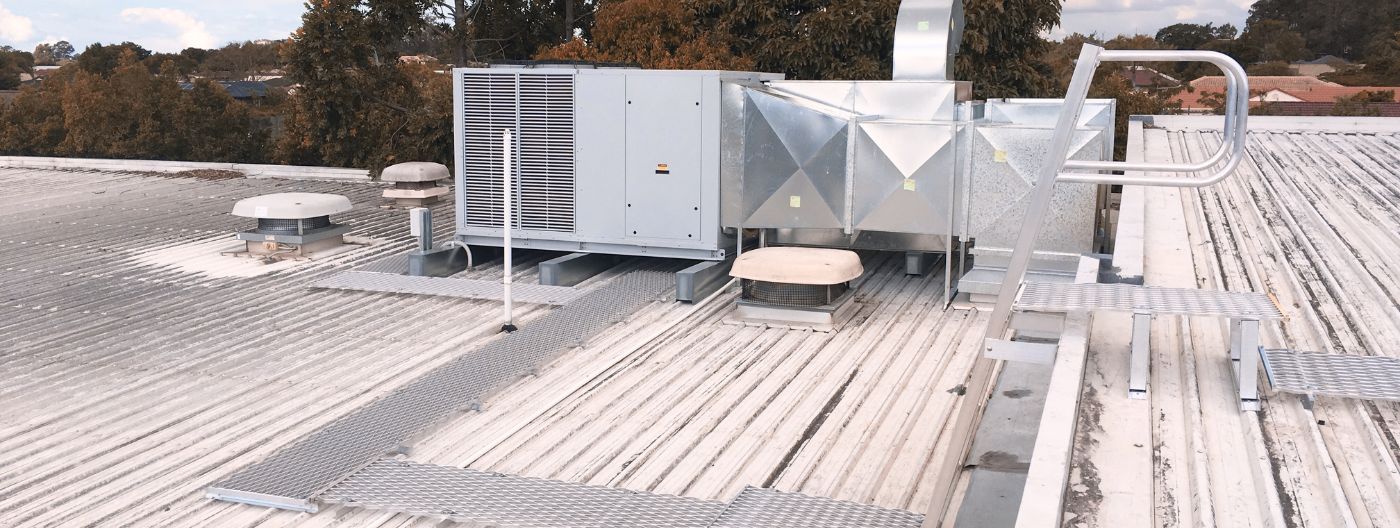
Safe access to roof plant is a must-do for building owners and facility managers
Providing safe access to roof plant is a non-negotiable for building owners and/or facility managers – and here’s why.
- New workplace manslaughter laws
Workplace manslaughter laws in place across Australian states have provision to hold both organisations and individuals responsible for unsafe work practices that lead to fatal workplace accidents. This includes failing to ensure people are not endangered and/or failing to take reasonable action to fix a dangerous situation. Whilst the provisions if found guilty vary per State, they typically include significant fines and prison term.
- Your workplace, your responsibility
The responsibility for providing a safe working environment doesn’t just apply to employees. It also extends to any site visitors, maintenance crews, contractors and sub-contractors. In short – the safety of anyone working at height on your site is your responsibility. That’s why building owners are increasingly fielding requests from external maintenance teams for evidence of compliant roof access and suitable height safety systems.
Work Health and Safety regulations building owners and facility managers need to know
Preventing falls and providing safe access to roof plant is legally the responsibility of the Person Conducting a Business and/or Undertaking (PCBU) and/or their senior officers or representatives. In this instance, most typically that responsibility will fall to building owners and/or facility managers.
| Work Health and Safety Regulations* Chapter 4 Hazardous Work | Work Health and Safety Regulations* Chapter 5 Plant and Structures |
|---|---|
| Part 4:4 Falls Given that falls from height are a leading cause of workplace fatalities every year, preventing falls from height is absolutely paramount. This includes preventing falls from an elevated workplace, through an opening or surface and off an edge. Where fall risks cannot be entirely eliminated, adequate protections and a safe system of work must be provided. Protections may include fall prevention, a work positioning system and/or a fall arrest system | Part 5.1 General duties of plant and structures Division 7 General duties of a PCBU involving the management or control of plant What’s more, persons with management or control of plant at a workplace must manage risks to health and safety associated with that plant. This includes using a competent installer, ensuring a risk assessment is conducted by a competent person and taking all reasonable steps to employ the health and safety features and warning devices recommended |
* The Workplace Health and Safety Regulation clauses referenced above are the same for ACT, New South Wales, Northern Territory, Queensland, South Australia, Tasmania and Western Australia. For Victoria, refer to Victoria Occupational Health & Safety Regulations 2017: Chapter 3 Physical Hazards – Part 3.3 Prevention of Falls and Chapter 3.5 Plant – Division 5 Duties of employers and self-employed persons who use plant
Are your existing roof plant access and/or height safety systems still fit-for-purpose?
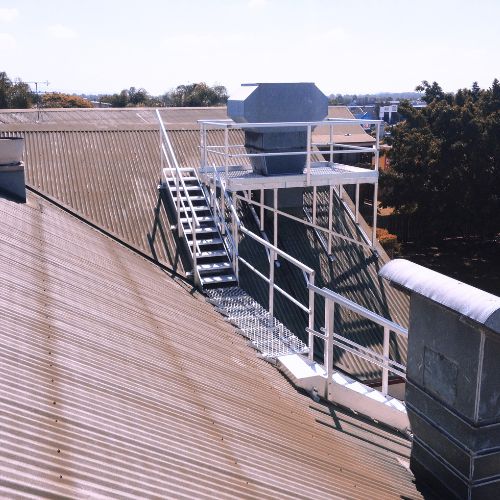
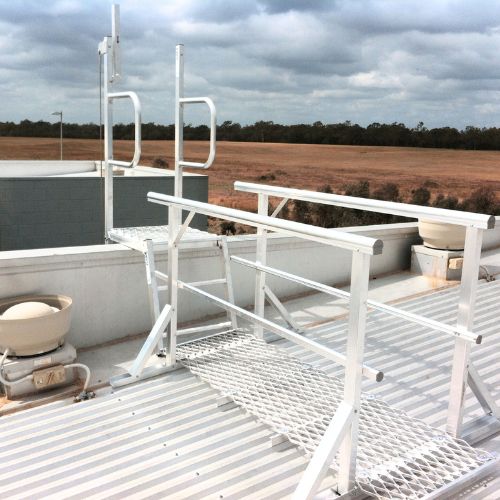
It’s often the case that roof access and height safety system requirements evolve over time – especially if new roof plant has been added over many years. That’s why regular reviews are so important. Having an existing height safety system doesn’t necessarily fulfill your legal obligations – it has to also be fully compliant and fit-for-purpose. Does yours still measure up? Here are some steps you can take to get a clearer picture:
- Map out existing roof plant
Start by taking stock of any existing roof plant. What is it? Where is it? How frequently does it need to be accessed or maintained? And by how many users? What tasks need to be performed? And how long do they typically take?
- Factor in future roof plant
Do you have plans to install new solar panels, add a skylight or upgrade your HVAC system? Upcoming changes or additions to your roof plant should be taken into account.
- Consider maintenance demands
If you’re on a flat easy access site with a relatively low roof and have minimal roof plant that requires infrequent maintenance and is located near the roof edge – you may be able to use a temporary or mobile roof plant access solution. An example would be using a mobile elevated work platform (EWP) to reach your roof plant.
Conversely, some roof plant maintenance is more demanding. For example, cooling towers don’t just require frequent testing. Inspectors also typically need to transport and use an array of equipment at the worksite (eg high pressure pumps, wet vacs, replacement parts, chemicals). This requires a robust roof plant platform that caters for users as well as their equipment.
- Complete a risk assessment
Once you’ve taken stock of your needs, use this checklist to kickstart a risk assessment. Remember, legally this assessment must be completed by a “competent person” – ie someone who meets these height safety competency requirements.
| Roof Plant Safe Access Checklist |
|---|
| Do you have safe access and egress from the ground to the roof? |
| Do you have a safe and clear path of travel from your roof access point to all roof plant? |
| Do you have sufficient edge protection in exposed areas where you need to walk or work? |
| Do you have platforms around or near roof plant which allow users to safely complete their tasks? |
| Have any roof plant installations made the surrounding roof area vulnerable (fall-through risk)? |
| Do your fall prevention, work positioning and/or fall arrest systems support all roof plant? |
| Are your fall prevention, work positioning and/or fall arrest systems still compliant? |
| What’s the usage level? Should permanent solutions replace temporary solutions? |
- Book a height safety audit
If you cannot answer the above questions, you cannot accurately assess and therefore manage your risks. If so, this would be a good time to get an experienced height safety specialist to undertake a professional audit of your existing height safety system, documentation and procedures. This audit will incorporate a thorough risk assessment, take into account the needs of users and map any gaps in your existing system.
Retrofitting roof plant access and/or height safety systems to resolve safety risks
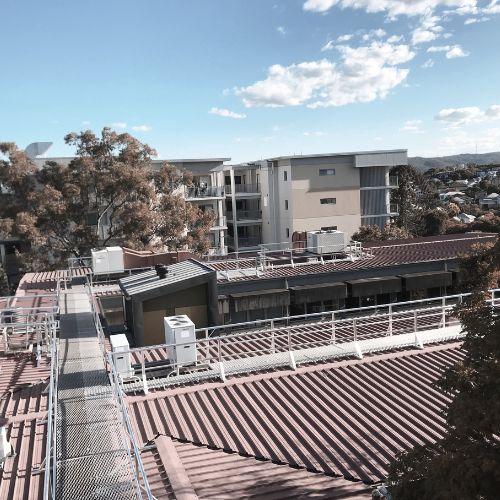
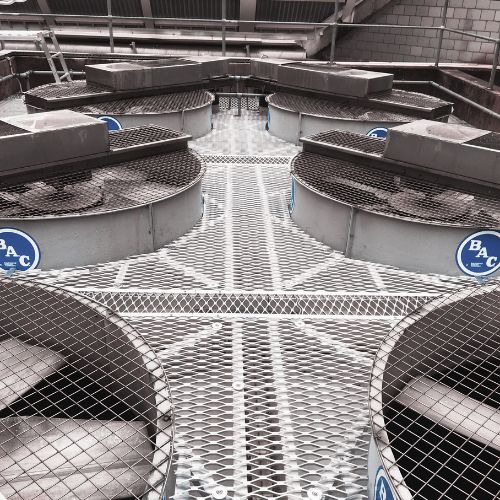
If your risk assessment and/or height safety system audit identifies compliance issues or unmitigated roof risks, it’s important to act with urgency.
- Prohibit and prevent roof access and/or roof plant work wherever safety risks remain. This may necessitate the implementation of physical measures such as access barriers, signage and locking mechanisms
- Call in a professional height safety system installer to design and install (or adapt as needed) a system that closes any gaps and fully complies with all relevant Australian height safety standards. Remember – not all installers are created equal, so here’s what to look for
The good news is there are many solutions to choose from and they can be combined and customised to suit your site and safety needs as you access the roof, travel to and from roof plant, complete tasks and exit to ground level.
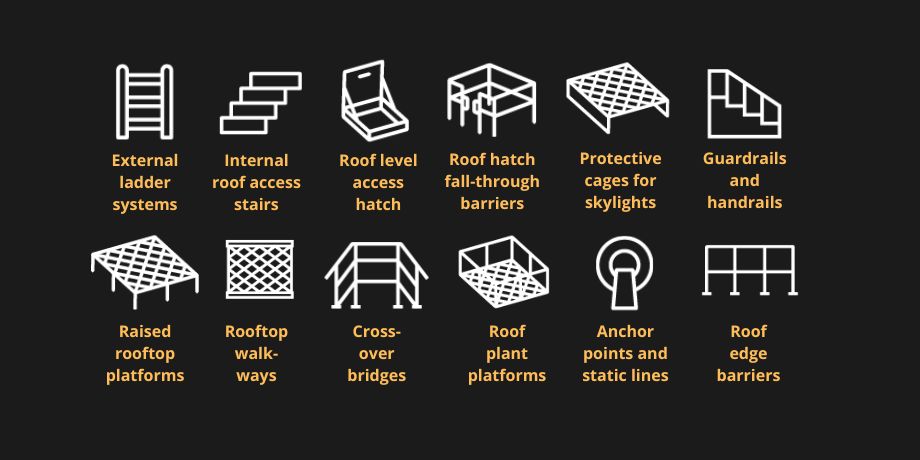
Factor risk-free roof plant access and maintenance into new roof plant installations
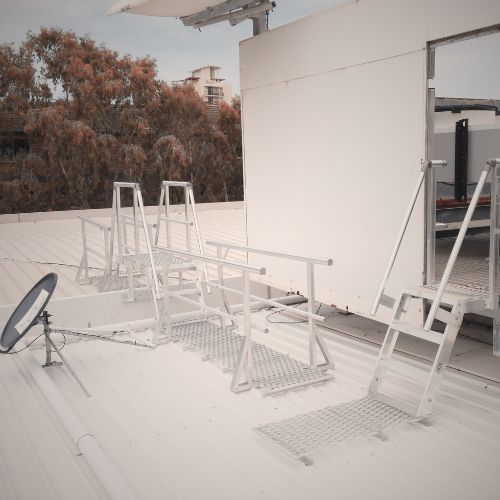
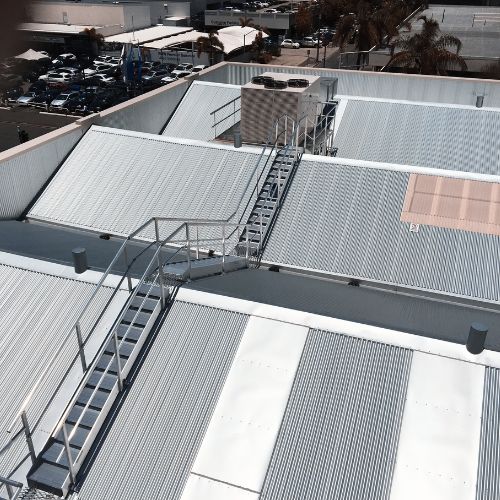
Going forward, the best way to ensure roof plant maintenance remains risk free is to factor ongoing access and maintenance requirements into every new roof plant installation.
For example, your roof plant supplier can reduce fall risks by positioning roof plant away from the roof edge and/or avoiding any fragile sections of the roof. They can also reduce health and safety risks by placing roof plant beyond the reach of other potential hazards (such as overhanging powerlines or tree branches). Even the way roof plant is laid out can make a difference (eg solar panels with sufficient gaps left for maintenance walkways).
Pre-installation is also the time when a professional height safety system installer (or other competent person) should assess the impact of new roof plant on existing roof access and height safety systems. Are they fit for this new purpose? Can they absorb the additional usage requirements? Do they need to be upgraded, changed or extended in any way? Is it time to install a more permanent solution? Is a secondary and closer point of roof access a better solution than extending your existing system right across the roof?
Getting professional advice and input at the outset will mitigate any new height safety risks and minimise any additional investment required in your height safety infrastructure.
